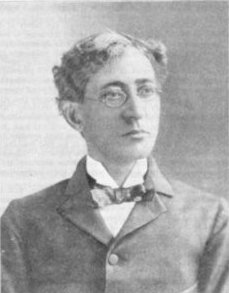Timothy Thomas Fortune facts for kids
Quick facts for kids
Timothy Thomas Fortune
|
|
|---|---|
 |
|
| Born | October 3, 1856 Marianna, Florida, U.S.
|
| Died | June 2, 1928 (aged 71) |
| Alma mater | Stanton High School for Negroes |
| Occupation | Orator, author, publisher, and African American civil rights leader |
| Political party | Republican |
Timothy Thomas Fortune (born October 3, 1856 – died June 2, 1928) was an important leader for civil rights. He was a journalist, writer, and publisher. He was the main editor of The New York Age, which was a very important newspaper for Black Americans.
Fortune also gave advice to Booker T. Washington, another famous leader. He helped edit Washington's first autobiography, The Story of My Life and Work. Fortune believed in speaking up strongly for the rights of Black people. His ideas helped start the Civil Rights Movement.
Contents
Early Life and Education
Timothy Thomas Fortune was born into slavery in Marianna, Florida. His parents were Emanuel and Sarah Jane Fortune. After the Civil War, he started school in Marianna, which was the first school for African Americans there.
His family later moved to Jacksonville. There, he went to the Edwin M. Stanton School. While growing up, he worked as a helper in the state senate. He also learned to print at a Jacksonville newspaper. His father, Emanuel, was a politician during the time of Reconstruction. These early jobs helped Fortune begin his career in writing and publishing.
In 1874, Fortune worked as a mail agent. He then became a customs inspector in Delaware. But he left this job after a few months. He wanted to go to Howard University in 1875. Even though he had mostly taught himself, he was accepted to study law. After two semesters, he changed his major to journalism. He left college in 1876 to work at People's Advocate, a newspaper in Washington, D.C.. On February 21, 1878, he married Carrie C. Smiley in Washington, D.C.
Becoming a New York Journalist
In 1879, Fortune moved to New York City. Over the next 20 years, he became famous as the editor and owner of several newspapers. These papers were first called the Globe, then the Freeman, and finally The New York Age.
When he first arrived in New York, Fortune worked as a printer. In 1880, he became a journalist and editor for The Rumor. This paper soon changed its name to The New York Globe. The Globe closed in 1884. Just one week later, Fortune started his own paper, the New York Freeman.
Speaking Out for Rights
By the late 1880s, many people thought Fortune was the best Black newspaper writer in America. In 1884, he wrote a book called Black and White: Land, Labor, and Politics in the South. This book, along with a pamphlet he wrote in 1885, questioned some ideas of Frederick Douglass.
In 1885, The Freeman changed its name to The New York Age. It aimed to be "The Afro-American Journal of News and Opinion." In 1890, Fortune became the chairman of the National Afro-American Press Association.
On January 25, 1890, Fortune helped start the National Afro-American League in Chicago. This group aimed to fight against unfair treatment of African Americans. The League stopped working after four years. But it was restarted in 1898 as the "National Afro-American Council." Bishop Alexander Walters was its first president, and Fortune was a key member. Fortune later became president of the Council from 1902 to 1904.
Important leaders like Booker T. Washington, W. E. B. Du Bois, and Ida B. Wells were part of this council. Du Bois later helped form the NAACP. The League and Council were very important in preparing the way for future civil rights groups. Fortune also strongly believed that "Afro-American" was the best name for his people. He said they were "African in origin and American in birth."
The New York Age and Its Impact
With Fortune as a co-owner, the New York Age became the most popular Black newspaper. It was a strong voice against discrimination, lynching, mob violence, and taking away voting rights. Many people read it because of Fortune's editorials. These articles spoke out against all forms of unfairness and demanded full justice for Black Americans.
When Ida B. Wells's newspaper was destroyed in 1892, Fortune gave her a job. This gave her a new way to write about and speak out against lynching. Fortune wrote more books, including The Kind of Education the Afro-American Most Needs in 1898. In 1907, after getting sick, Fortune sold the New York Age to Fred R. Moore. The paper continued to be published until 1960.
Fortune was also active in politics. He supported William McKinley in the 1900 presidential election. He was a member of the Republican Party. However, he was known for criticizing corruption in all political parties. He always pushed for good principles.
Negro World Newspaper
In 1923, Fortune started working as an editor for the Negro World. This newspaper was published by the Universal Negro Improvement Association and African Communities League. At its peak, the Negro World had over 200,000 copies printed. It was sent out across the United States, Canada, Europe, Africa, the Caribbean, and Central America.
While working there, Fortune met many famous writers. These included Zora Neale Hurston, W. A. Domingo, Hubert Harrison, and John E. Bruce.
Later Life
In 1901, Fortune moved to Red Bank, New Jersey. He built his home there, which he called Maple Hall. This house is now a historic place. It was added to the National Register of Historic Places in 1976.
Timothy Thomas Fortune died in 1928 at age 71 in Philadelphia, Pennsylvania. He is buried at Eden Cemetery in Collingdale, Pennsylvania.


